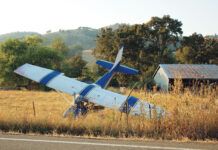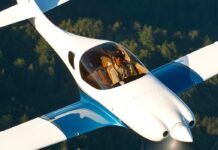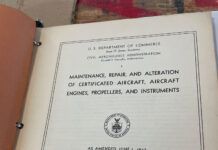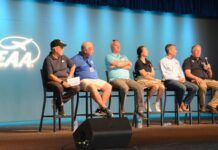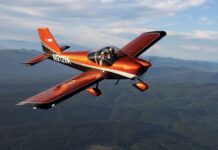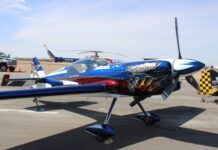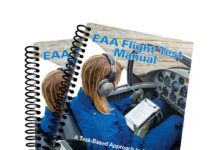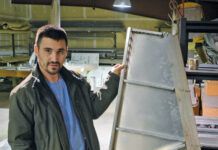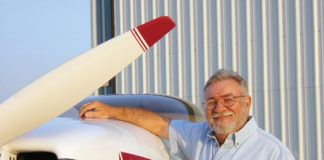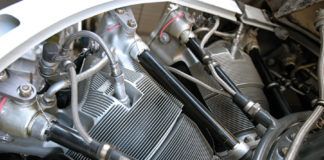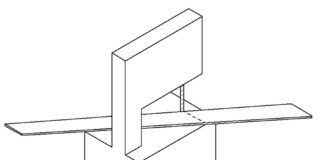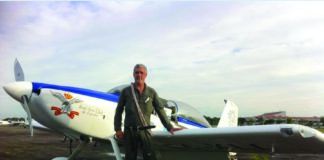When a Lancair IV-P lost power, began leaking oil over the windscreen and eventually landed on a Florida beach, the subsequent crash set off a surprising chain of events. The pilot’s calm under fire has been overshadowed by the freakish outcome of the forced landing; a runner on the beach was struck and fatally injured by the Lancair.
In the specialist press, the pilot was celebrated for keeping the airplane under control and putting the Lancair onto the Hilton Head beach instead of into a parking lot—potentially injuring many more souls—or into the ocean, which might have had dire consequences for him and his passenger. We pilots realized just how challenging such a situation can be: little to no forward visibility in an airplane that descends quickly and lands fast, and no power at all to help moderate the descent.
It was a different story in the mainstream press, whose merchants of hipshot derided the pilot for not seeing the runner and for callously choosing this stretch of beach, which, according to reports, was not at all crowded. His desire to save his airplane overrode what should have been a greater desire to spare the lives of others, or so you’d think from reading the general-media accounts. And in the stories I’ve read where reader feedback was supported, there were many examples of general outrage. Again, the pilot should have put the airplane into the ocean, and, so it would seem, sacrifice his own and his passenger’s life to avoid what can only be considered a freak occurrence.
Reporters look for sources and found one ready made in Mary Schiavo, former inspector general of the National Transportation Safety Board. She is reported to have commented that “even with oil smeared on the windshield…[the pilot] should have been able to see through a small window on the side of the plane and possibly yell out to anyone below.” If only the pressurized Lancair had one…
After the shock of an airplane hitting an innocent jogger began to subside, the usual questions about safety began to percolate to the surface. Let’s put something to rest right away: As far as I can discern, the engine and prop on the accident airplane were certified items. What appears to have been a crankshaft failure might well have happened, and indeed has happened, to a Piper Malibu. Without more information, it’s difficult to separate the engine failure from the fact that it happened to be in an Experimental/Amateur-Built aircraft, but that’s too fine a distinction for the general media.
Instead, the press began looking for sources to understand the homebuilt safety record. Unfortunately, it found the recently published Nall Report, put out by the AOPA Air Safety Foundation based on NTSB data. In fairly a churlish tone, the Nall Report says:
Amateur-built aircraft continued to suffer dramatically higher accident rates than type-certificated aircraft due, in part, to greater numbers of mechanical failures and unexplained losses of engine power.
In 2008, 228 amateur-built fixed-wing aircraft were involved in 226 distinct accidents, the same numbers as in 2007… This represents 18% of all non-commercial fixed-wing accident aircraft, the highest proportion in the past ten years, during which time that proportion has steadily increased. Sixty-one of these were fatal, resulting in 82 deaths; these were increases of six fatal accidents and nine fatalities from the previous year, and made up 26% of fatal accidents and 19% of all fatalities. By comparison, amateur-built aircraft logged less than 5% of the corresponding flight time. 2008 saw the highest numbers of fatal accidents and individual fatalities in the past decade, and more total accidents than any year except 2007. The 27% lethality rate in these accidents was 10 full percentage points higher than that for accidents in type-certificated airplanes.
Fairly sobering numbers—if they’re correct.
Turns out they’re not. I spent a few hours with the raw data and by simply recognizing which aircraft were not actually Experimental/Amateur-Built designs, found that the true count was 53 fatal accidents taking 72 lives. Now, that’s still more than any of us would like it to be, but the point is that the NTSB records are rife with errors. Some aircraft listed as homebuilts, in fact weren’t: There was a Kaman helicopter and a Laird biplane in the mix. What’s more, the recent changes in registration rules for ultralights have added a number of designs now called ELSAs that were lumped in with homebuilts, further skewing the data. There were basic arithmetic errors, crediting one accident involving two aircraft and three fatalities as having three deaths each. In truth, sloppy record keeping isn’t new, but the fact is that this latest round of reports has caused this shabby data set to be used against us.
Aviation writer and statistic keeper Ron Wanttaja found similar errors over the years and additional errors in the 2008 data; his detailed look at the data reduced the total number of accidents for homebuilts to 185, a deletion of 84 accidents that did not involve homebuilts. What’s more, Wanttaja advocates counting accidents against fleet size instead of the more popular hours-flown denominator because this is a figure more easily discerned. In his analysis, the original accident rate by fleet size as published in the Nall Report was 0.86% in 2008, while the much more accurate assessment has the number at 0.59%. The result is that the homebuilt rate by fleet size is just less than 20% higher than for certified aircraft, rather than the 72% higher as claimed by the Nall Report.
Trying to determine an accident rate per hours flown is complicated by the error-ridden accident data on one side of the equation and the nature of hours-flown data collection, which is a combination of voluntary pilot surveys and educated guesswork on the other. Moreover, it’s common to see data sets that contradict. The FAA data used in the Nall Report implies that fewer homebuilts were flying in 2008 as part of an overall slowing of the GA fleet’s hours-flown figure. This in turn raises the accident rate for a given number of accidents. But the agency’s own outlook shows Experimental/Amateur-Built aircraft as one of the very few segments expected to grow in the next 10 to 15 years, and it’s my perception that the activity level of homebuilts is at least steady with regard to the rest of the fleet. (I’ll confess this is a purely unscientific survey, so I won’t put hard numbers to it.)
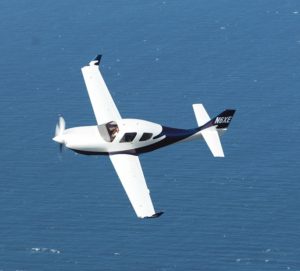 So the most recent event has the FAA publishing an “InFO” Information for Operators document citing “Safety concerns of amateur-built experimental Lancair and other amateur built airplanes possessing high wing loading and stall speeds in excess of 61 knots…” Dated March 9, the report was not released until the third week in March. The report goes on to say that, “FAA analysis of fatal accidents for airplanes operating under an experimental airworthiness certificates, such as the Lancair, has revealed a large and disproportionate number of fatal accidents for their fleet size. Though the FAA has seen a recent downward trend, these aircraft types have experienced fatal accident rates substantially higher than for-personal-use general aviation and the overall fatal accident rate for all amateur-built experimental aircraft.” Hold on. Didn’t the NTSB and AOPA just say the homebuilt fatality rate was up? And just what defines “a large and disproportionate number of fatal accidents”? Can we have some accurate data, placed in context, please? We need more than a vague sensation that something’s amiss, and, before making recommendations, understand the root causes of the accidents that form this impression. Wing loading and stall speeds are easy targets because they’re lines on the spec sheet, but the truth is more subtle. Fast airplanes can be safe, and even slow-stalling aircraft with low wing loading can be a handful. (Early experience with SLSAs demonstrated that a pilot with 2000 hours in a Bonanza might not safely transition into an LSA without explicit instruction.)
So the most recent event has the FAA publishing an “InFO” Information for Operators document citing “Safety concerns of amateur-built experimental Lancair and other amateur built airplanes possessing high wing loading and stall speeds in excess of 61 knots…” Dated March 9, the report was not released until the third week in March. The report goes on to say that, “FAA analysis of fatal accidents for airplanes operating under an experimental airworthiness certificates, such as the Lancair, has revealed a large and disproportionate number of fatal accidents for their fleet size. Though the FAA has seen a recent downward trend, these aircraft types have experienced fatal accident rates substantially higher than for-personal-use general aviation and the overall fatal accident rate for all amateur-built experimental aircraft.” Hold on. Didn’t the NTSB and AOPA just say the homebuilt fatality rate was up? And just what defines “a large and disproportionate number of fatal accidents”? Can we have some accurate data, placed in context, please? We need more than a vague sensation that something’s amiss, and, before making recommendations, understand the root causes of the accidents that form this impression. Wing loading and stall speeds are easy targets because they’re lines on the spec sheet, but the truth is more subtle. Fast airplanes can be safe, and even slow-stalling aircraft with low wing loading can be a handful. (Early experience with SLSAs demonstrated that a pilot with 2000 hours in a Bonanza might not safely transition into an LSA without explicit instruction.)
In addition, it sure seems as though Lancair is getting to ride the barrel down the falls here. There are other designs with high wing loading and with stall speeds at or above 61 knots but only Lancair was specifically referred to. Could it be that the Lancairs are the most visible examples?
In the InFO document, the FAA made several recommendations. Among them, installation of angle-of-attack devices or stall warnings; use of mechanics with specific-model experience to evaluate rigging, wing alignment and weight and balance; evaluation by a qualified test pilot for handling qualities, particularly after aerodynamic modifications are performed; and specific training for the pilot. At least in the Lancair world, most of these recommendations are already being followed—there are effective, demanding training programs for the Lancair IV to ensure pilots are comfortable with the airplane’s handling qualities and required airspeeds.
If the past is prologue, my worry is that the next act will be a move by the FAA to set standards for Experimental/Amateur-Built aircraft for specs such as maximum wing loading and stall speeds. We enjoy incredible freedom in this area, but the chain of events strikes me as table setting for regulations that, for the first time, would impede the ability of designers and experimenters to pursue new technologies and aerodynamics. And we all know that once a few regulations are imposed, follow-ons come much more easily. What might be next? Demand certified engines and props? TSO-approved avionics? (Ironically, there’s a good chance the Lancair at the start of this story had all of the above.)
I hope the Experimental Aircraft Association will begin to make more noise on this front, certainly much more than the meekly worded rebuttal to the Nall Report’s use of suspect NTSB data and acknowledgment of the FAA InFO letter. I don’t doubt there are politics in the background, but, personally, I feel under-represented.
This is a line-in-the-sand moment.
If the FAA is intent on forcing rules through in the guise of improving safety, it’s critical that we all call attention to sloppy, biased reporting and accident data riddled with errors before it constitutes the rationale for revised policy or increased regulation.
On that note, we’ve decided to do something about this dissemination of bad data. Starting in the July issue of KITPLANES and thanks to the considerable efforts of Ron Wanttaja, we’ll begin looking into certain aircraft types and the accidents common to them. First, we’ll examine the two-seat Van’s RV series, and then have a detailed review of the Lancair accidents in the August issue. It’s my hope that proper and accurate accident analysis will reveal that our sport can mix freedom of design and execution, and safety. I suspect that once we’ve stripped away the stupid pilot tricks and ill-considered modifications to established kits, the accident picture of homebuilts and store-bought airplanes will be remarkably similar.

